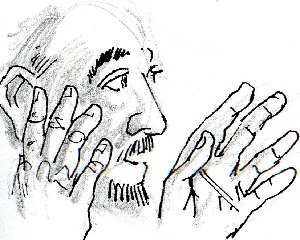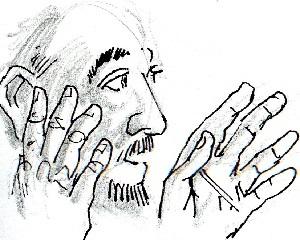

“The measure with which you measure will be measured out to you” (Matt 7:2).
2 Kgs 17:5-8, 13-15a,18; Matt 7:1-5
As someone who has worn glasses since childhood, I appreciate the idea that our view of reality depends on the lenses we wear. No one is fully objective, free of prejudging (prejudice) or biases shaped by learned assumptions or past experiences that color our perceptions. Language itself defines our worldview. We see what we expect to see, want or need to see. Witnesses to the same event report things differently and are convinced that their version is correct. How many political arguments arise because otherwise intelligent people simply can’t believe how anyone could hold views an opponent is espousing.
Jesus was keen to observe how vision determined everything else. People judged others for the same faults they had. Some couldn’t see past their own interests, saw only enemies or were blind to obvious truths. Restoring physical sight was one of the key miracles he worked for the blind and one of more frustrating conditions he encountered in many religious leaders. The poor and the simple could see what was hidden from the wise and learned.
Discipleship is about learning to see, and faith is the gift of deeper insight that enables believers to see the meaning of things and events. Empathy is the ability to see yourself in another, especially someone who is suffering. Historically, the widespread practice of slavery was possible only because conquering people convinced themselves that others were subhuman and could be owned and used as work animals or abused freely because they lacked human feelings or personal rights.
When Jesus asked blind Bartimaeus what he wanted, he answered with the most basic prayer we can pray: “Lord, I want to see.” His life up to that time had been in darkness, crying out to a passing world. When Jesus opened his eyes, Bartimaeus’ life began again as he left the sidelines and followed Jesus, who was on the road to Jerusalem. It is likely that this former blind man was with Jesus when he completed his mission on the cross and was revealed by his resurrection.
To pray for sight is risky, for we may see what we have avoided or could not bear to see about the world and our complicity in structures of disparity we benefit from. Poverty is a modern form of slavery, cheap labor and environmental destruction factored into a low consumer prices and higher profits. Comfort, convenience and entertainment for some requires the exploitation of others.
Besides the larger patterns of oppression that become visible when our eyes are opened, we may find small conversions occurring every day as we learn to see people who were formerly invisible, stereotyped, labeled, insignificant or threatening. Once they become real people, relationships are possible. Our world expands as we discover more diversity but also the common humanity we share with everyone.
Ultimately, those who learn to see begin to recognize the image of God everywhere and in everyone. When this happens, we are not far from the Kingdom of God.
Advertisement








